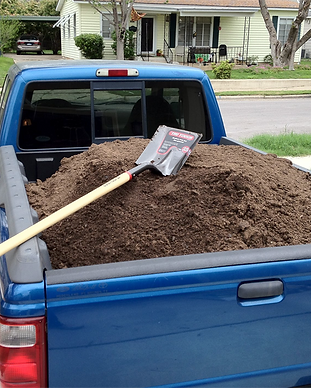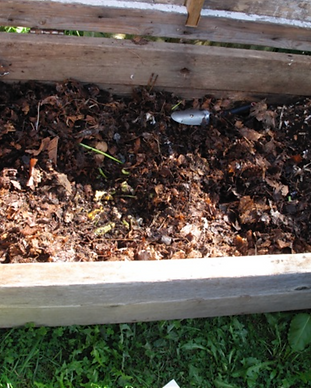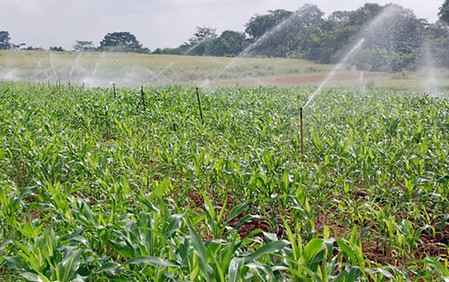We researched community gardens and garden design while planning our school community garden. We are sharing some of our learning here for any other gardeners.
Garden Box Materials
Wood

Types
Redwood
Cedar
Cypress
Pros
Easy to move & disassemble
Beautiful
Natural material
Sturdy
Widely available
Biodegradable
Cons
Less durable
Susceptible to rot
Some wood has toxic chemicals
Susceptible to weather, soil damage and insects
Stone

Types
Bricks
Concrete
Found Stones
Pros
Lasts forever
Weather-safe
No insects
Easy to find
Absorbs heat (good for cold climate)
Cons
Heavy
Potentially unstable
May get too hot (in hot climate)
Plastic

Types
HDPE or other recycled materials
Pros
Lightweight
East to move
Rot Resistant
Light or dark colors adjust heat absorption
Easy to find
Cons
May wear down from sun exposure
May not hold up against heavy soil
Metal

Types
All kinds: found, scrap, recycled, reused, galvanized steel
Pros
Strong
Won’t rot
Possible ready-made shapes (metal stock tank)
May get for free
Weather resistant
Can be used for composite area
Cons
Sharp edges may be dangerous to children or animals
Rust
Can get too hot
Companion Planting
Soil Options

Compost
Quantity: Mix of 1/3 compost 2/3 soil is ideal
Variations: Can use manure, grass clippings, coffee grounds, cardboard, banana peels, worms, etc.
Notes: Contact city or local zoo for possible free compost

Mulch
Contact local tree service or city arborist for free or low cost mulch

Soil
Quantity: 9' x 3' x 1.5' bed requires approx. 1.5 cubic yards of soil
Variations: Loam (equal parts sand, silt and clay)

Additional Nutrients / Fertilizers
Variations:
Nitrogen, phosphorus, potassium, calcium, magnesium, sulfur or fertilizers that use a balance of main nutrients

Green Manure
(Cover Crops)
Variations:
Legumes (such as peas), alfalfa, clover, beans, vetch
These crops help improve soil for range of reasons

Soil Preparation
Need to loosen soil, level it out, remove weeds and balance pH before starting
Watering Solutions
1.
Rain Barrel
-
One per garden bed or one to fill watering cans
2.
Drip Irrigation
-
Requires access to a garden spigot
-
There are kits available to purchase
3.
High-Rise Sprinkler
-
This option may work for multiple garden beds at once, but they will likely have to be closer together
4.
Raised Sprinkler Head
-
This option would require modifying the existing sprinkler system or access to a hose
-
Garden beds would need to be low and located near sprinklers
5.
Watering Stakes
-
Fill up a plastic bottle and attach it to a stake, insert stake in garden bed
-
Designed to work with recycled plastic bottles up to 2 liters
-
Average watering time is 7-14 days
6.
Watering Can
-
This could be a solution for the classes that will be tending the gardens, they can fill the cans before making their way to the garden
-
Size and material will depend on the age of the children who will be using it






Tools and Supplies


Propagating Kits
Purpose: Starting seeds indoors
Options:
-
Plastic cell packs / pots
-
Fiber grow tray/pots
-
Dome tray/freezer bags or plastic wrap can be plastic bags
-
Table top or shelve lighting stand
-
Heat mat
Notes:
-
There are several cost effective options available for kits
-
Lighting is a key component when starting seeds indoors as they require 14-16 hours of light per day
Soil pH Testing Kit
Purpose: To know if the soil is acidic, alkaline or neutral
Plant Labels
Purpose: Keep track of what you planted
Options:
-
Painted rocks
-
Decorated sticks
-
Repurposed silverware
Notes:
-
Potential art project
Garden Covers
Purpose: Protect against insects, cold, animals
Options:
-
Wood frame: stakes, sticks or boards
-
Plastic: PVC pipe or plastic boards
-
Metal: Poles, fences or tomato cages
Notes:
-
Differences have to do with your purpose (weather, insects, or animals)
-
Plastic and glass keep out animals, but also keep out pollinators
-
Mesh and netting let in water
-
Other differences have to do with longevity, appearances and concerns listed in materials for building boxes section
Compost Bins
Purpose: Collect organic waste for use a fertilizer in the garden
Options:
-
Tumblers
-
Stationary bins
Shovels
Purpose: For turning soil
Options:
-
Handle materials (wood, metal)
Notes:
-
Multiple for many kids to work/use at once
3-Pronged Hand Cultivators
Purpose: For weeding and cultivating soil
Options:
-
Materials (metal, wood)
Notes:
-
Multiple for many kids to work/use at once
Gloves
Purpose: Protect your hands
Options:
-
Rubber fingered gloves
-
Cloth
Notes:
-
Multiple for many kids to work/use at once
Irrigation Equipment
Purpose: Water the garden
Options:
-
Hoses
-
Drip system
-
Sprinklers
-
Watering cans
Wheelbarrow or Garden Cart
Purpose: For moving compost, plants, mulch
String and Measuring Tape
Purpose: For measuring spacing between rows, beds, seeds
Rake
Purpose: For smoothing soil, removing leaves
Rain Barrel
Purpose: For collecting rainwater
Options:
-
Plastic
-
Home made from food grade plastic
-
Wooden
-
Pop-up polyester
Storage Area or Container
Purpose: For storing tools
Options:
-
Storage box
-
Shed
Notes:
-
Set aside an accessible area inside or outside school depending on need
-
Purchase a storage shed/box that is accessible and can safely store tools
Garden Trellis
Purpose: Supports for climbing vegetables
Options:
-
Bamboo canes
-
Wire
-
Sticks
-
Recycled material
Disinfectant
Purpose: To disinfect tools
Options:
-
Disinfectant wipes
-
Bleach solution
Signs
Purpose: Help communicate with other gardeners
Options:
-
Hand drawn
-
Store bought


Planting Guidelines

Rutabaga
Rutabagas require a longer growing season, but need to mature in cool weather, so you should plant them from late May to early June for a fall crop. Plant seeds one to two inches apart in rows 18-30 inches apart.
Grows Well With
Avoid Planting With
Kale
Cabbage
Bean
Carrot
Peas
Planting Guidelines
Plant in early or mid-summer
Full sun

Turnip
Plant turnips in an area that receives full sun (although they can also thrive in partial shade). Space your seeds about an inch apart and cover them with roughly half an inch of garden soil. Thin turnip seedlings. When seedlings emerge, thin your crop to one turnip every 4-6 inches.
Grows Well With
Avoid Planting Near
Beets
Carrots
Peas
Planting Guidelines
Plant in spring and early fall
Full sun, but will tolerate partial shade

Beets
Sow beet seeds in rows 10cm (4inc) apart, with a row gap of 20cm (8in), or in blocks 15cm (6in) apart each way. Make a hole about 2cm (1in) deep with a dibber or your finger then drop the seed capsule in space wide rows 12-24 inches (30-61cm) apart.
Grows Well With
Avoid Planting Near
Pole beans
Field mustard
Charlock (Wild mustard)
Beans
Cabbage
Broccoli
Planting Guidelines
Plant in early spring, make successive plantings every 2-3 weeks until mid-summer
Full sun

Carrots
Spacing between rows requirements are 16-24 inches. Plant with a space between plants of 1-3 inches at a depth of 1/2 inch, or thin carrot seedlings after they sprout. This is important, as if your carrots are crowded, they will not be able to grow straight and round!
Grows Well With
Avoid Planting Near
Coriander
Dill
Parsnips
Beans
Peas
Raddish
Cabbage
Chives
Lettuce
Onion
Leek
Peas
Rosemary
Sage
Tomatoes
Radis
Planting Guidelines
Plant in spring and summer
Full sun

Cabbage
Cabbage is easy to transplant. Plant so that 1-2" of the main stem is burried. Space according to the directions on the label, generally 12-24 inches apart in a row, depending on the variety and size of the head it makes.
Grows Well With
Avoid Planting Near
Mustard plants
Strawberries
Tomatoes
Grapes
Pole beans
Beets
Carrots
Planting Guidelines
Plant in mid- to late summer
Full sun

Broccoli
If starting seeds outdoors, sow seeds 1/2-inch deep and 3 inches apart. Once seedlings reach a height of 2-3 inches, thin them so that plants are 12-20 inches apart. If planted in rows, space rows 24 inches apart to give yourself enough room to walk between them, but you can plant 2-3 abreast in a row to minimize aisle space.
Grows Well With
Avoid Planting Near
Cabbage
Cauliflower
Lettuce
Pole beans
Tomatoes
Beets
Spinach
Cabbage
Planting Guidelines
Plant in spring or fall
Full sun

Peas
Plant seeds 1 inch deep (slightly deeper if soil tends to dry out quickly) and about 2 inches apart. Plant in rows spaced 12-24 inches apart.
Grows Well With
Avoid Planting Near
Onions
Garlic
Chives
Beans
Carrots
Radish
Turnip
Planting Guidelines
Plant in spring
Full sun or partial sun

Mesclun Mix
Try to space seeds about a half-inch apart. After sowing, cover seeds with about 1/4 inch of planting mix and pat the area gently to ensure good seed-to-soil contact. Water carefully with a fine spray so you don't dislodge or wash away the seeds. Keep the seed bed moist and seedlings will begin to sprout in a week or so. In rows 12 inches apart, sow seed directly in the ground 1/2 inch deep and cover with fine soil.
Grows Well With
Avoid Planting Near
Beets
Carrots
Radishes
Spinach
Planting Guidelines
Plant in late summer or early fall
Full sun or partial sun

Radish
Throw the seeds onto the ground and cover with barely half an inch of soil, then water and watch them grow. Radishes are always grown from seed directly into the soil where they will grow to maturity and do not need to be started indoors and then transplanted. Directly sow seeds outdoors 1/2 to 1 inch deep and 1 inch apart in rows 12 inches apart. Plant another round of seeds every 10 days or so - while weather is still cool - for a continuous harvest of radishes in the late spring and early summer. Plan on a fall planting. Sow radish seed 1/2 inch (12 mm) deep and 1 inch (2.5cm) apart; thin successful seedlings from 1-4 inches (2.5-10cm) apart in wide rows depending upon the variety. allow greater room for winter varieties. Space single rows or mounded ridges 10-16 inches (25-40cm) apart.
Grows Well With
Avoid Planting Near
Turnips
Peas
Planting Guidelines
Plant in spring and fall
Full sun

Beans
Sow bush been seeds 1 inch deep and 2 inches apart in rows 18 inches apart. Plant a little deeper in sandy soils (but not too deep). For pole beans, set up trellises or tepees prior to planting so that the plants' fragile roots are not disturbed. Plant pole bean seeds about 1 inch deep and 3 inches apart. Sow bush bean seeds 1 inch deep and 2 inches apart in rows 18 inches apart. Plant a little deeper in sandy soils (but not too deep). For pole beans, set up trellises or tepees prior to planting so that the plants' fragile roots are not disturbed. plant pole bean seeds about 1 inch deep and 3 inches apart.
Grows Well With
Avoid Planting Near
Onions
Leeks
Garlic
Scallions
Beets
Carrots
Planting Guidelines
Plant in spring
Full sun

Marigolds
Marigolds will grow in a wide range of soil types and conditions. all they really demand is plenty of sunlight. as long as you plant them in areas of full sun, they should be particularly yrouble-free plants. For best results, thin or transplant young marigolds while they are still small, spacing French and Signet types 8-10 inches apart. Larger American varieties should be at least 10-12 inches apart. Marigolds grown in containers can become a bit crowded.
Grows Well With
Avoid Planting Near
Broccoli
Cabbage
Planting Guidelines
Plant in spring through midsummer
Full sun

Spinach
Plan spinach seeds an inch apart in rows 14-18 inches apart and cover the seeds with a 1/2 inch of soil. Keep the soil moist and after the seeds germinate thin them to stand 2-5 inches apart. Most gardeners like to do this in several passes to determine the strongest plants to save.
Grows Well With
Avoid Planting Near
Cabbage
Beans
Peas
Broccoli
Kale
Planting Guideliens
Plant in spring
Full sun

Kale
Space kale 18-24 inches apart in an area with full sun and well-drained, fertile soil with a pH of 6.5 to 6.8. Improve native soil by mixing in several inches of aged compost or other rich organic matter. Kale is a fast grower, so keep the soil moist by giving it 1
Grows Well With
Avoid Planting Near
Strawberries
Tomatoes
Beets
Spinach
Peas
Radishes
Planting Guidelines
Plant in early spring or late summer
Full sun, but will tolerate partial shade
*Avoid planting near these plants because they are susceptible to the same disease or pests.
* Avoid planting near these plants because they compete for the same nutrients in the soil.
*Avoid planting near these plants because they stunt plant growth.
*Items listed in red are not included in the list of seeds already purchased.
Garden Layout
4 Kindergarten, 6 Primary (1-3grade), 4 Junior (4-6 grades) =10 classes total. There are 3 raised beds that are 3 x 9 feet with 6 feet between beds. The number of plants that can fit per bed is limited by the 2 rows running on the 9-foot length.

_JPG.jpg)
References & Resources
Galvanized Steel Garden Beds - How to guide
Green Upside - Make your own labels
Garden Resources, Tools and Materials
Ontario Edible Education Network
Construction & Materials:
· Lumber: Hardware Store, Local Lumber Store
· Soil: Hardware Store, Local Nursery, local landscaping company
· Composters: MRWMD, Seeds of Change
· Vermicomposters (worm compost!): MRWMD, Hardware Stores, Nurseries
· Season Extenders (like greenhouses): Local Nursery, Hardware Store
Gardening Supplies (Catalogues/Websites):
· Peaceful Valley Farm and Garden Supply Resources: tools, seeds, fertilizers Contact: www.groworganic.com
· Seeds of Change
Resources: seeds, season extenders, tools Contact: www.seedsofchange.com
· Harmony Farm Supply; Contact: www.harmonyfarm.com
Resources: tools, seeds:
· Sunland Garden Products
· Resources: soil, compost, (they sell to OSH) Contact: www.sunlandgarden.com
· National supplier - Veseys: https://www.veseys.com
· Seeds of Diversity: seeds.ca
· Local Hardware store or Nursery



